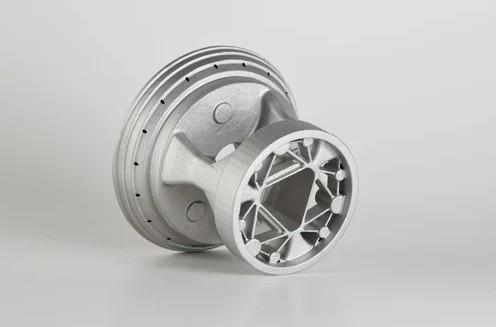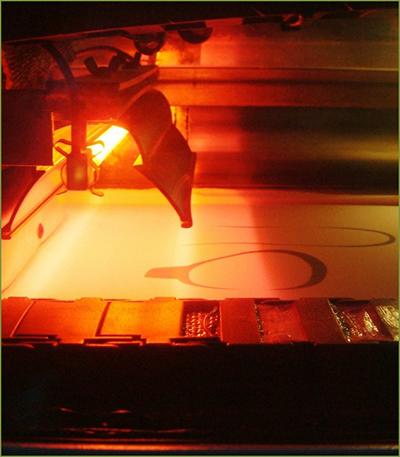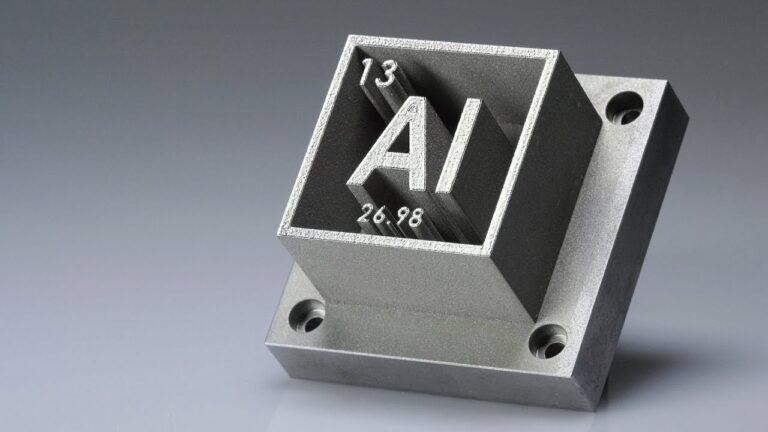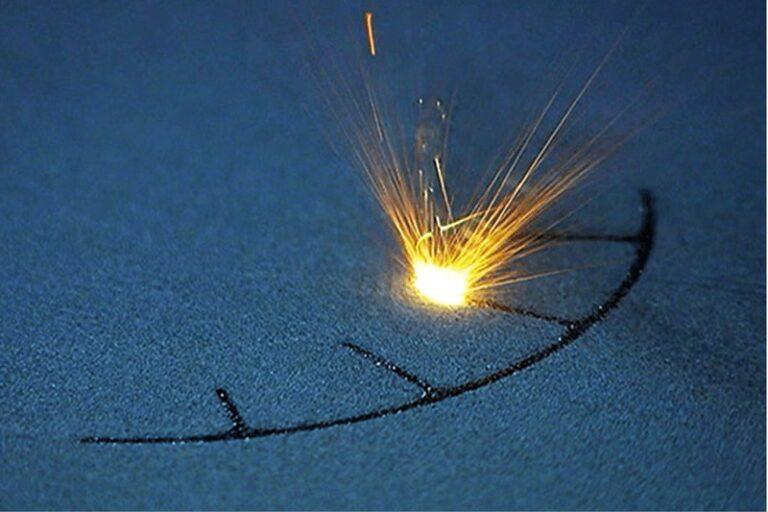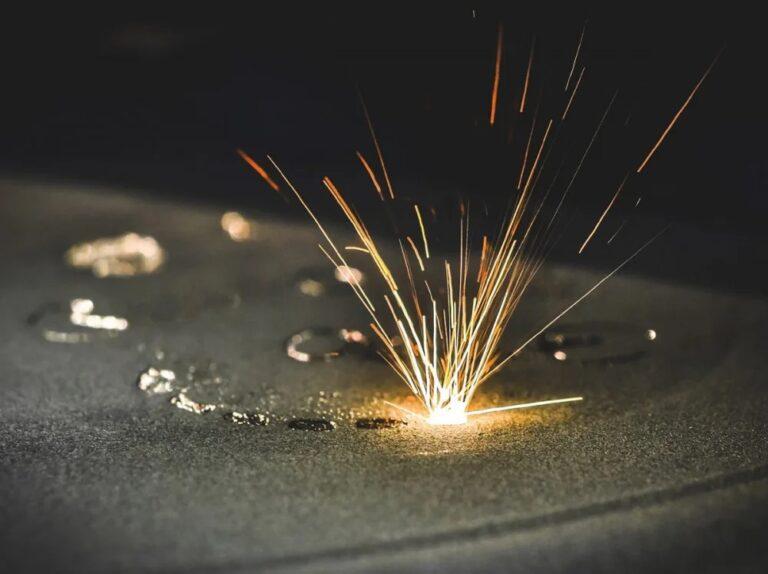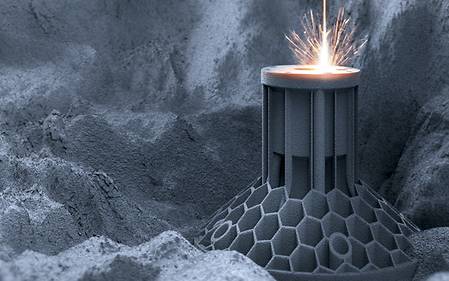Inside the Powder Bed Fusion 3D Printer: A Detailed Look at the Printing Process
Introduction to Powder Bed Fusion 3D Printing
The powder bed fusion 3D printer melts and fuses layers of powdered material to produce high-precision, three-dimensional objects. This innovative technology has revolutionized manufacturing, making it possible to create complex structures with exceptional accuracy and precision.
The invention of stereolithography in the 1980s gave rise to the idea of powder bed fusion 3D printing. Over time, technological advancements have led to the development of two types of powder bed fusion 3D printing, namely selective laser sintering (SLS) and selective laser melting (SLM).
Both SLM and SLS utilize lasers to fuse powdered materials, but the processes differ. In SLM, the laser melts and fuses the powder, while in SLS, the laser selectively sinters the powder to create the desired shape. Despite their differences, both techniques have the ability to produce a variety of products, such as medical implants and airplane parts.
The Powder Bed Fusion Due to its capacity to create objects with intricate geometries, great accuracy, and superior mechanical qualities, 3D printing has grown in popularity. Numerous industries, including aerospace, automotive, and healthcare, have used the technique.
As with every technology, powder bed fusion 3D printing has its drawbacks, including constrained material selection and expensive equipment. As technology continues to evolve, it progressively overcomes these constraints and makes powder bed fusion 3D printing an even more alluring manufacturing choice.
Powder bed fusion 3D printing is transforming the manufacturing sector with its cutting-edge technology. It has many advantages over conventional manufacturing techniques thanks to its capacity for precise and accurate creation of complex items. The technology’s potential applications are only expected to increase as it develops and gets better.
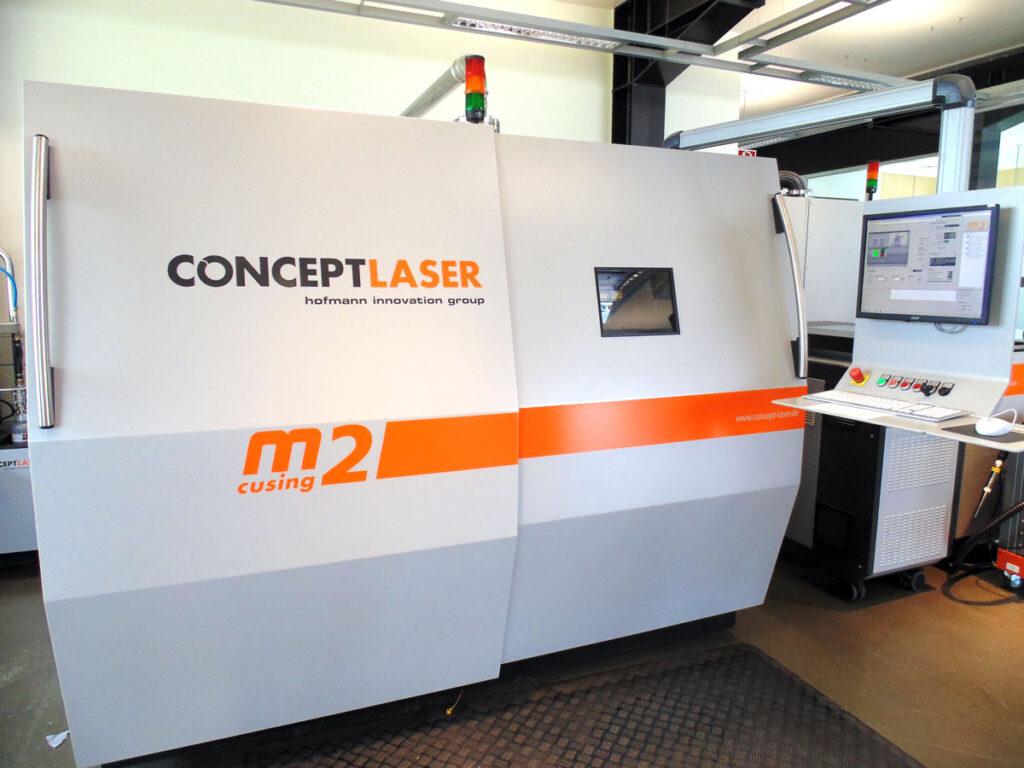
Overview of Powder Bed Fusion 3D Printer Components
Powder bed fusion 3D printers are cutting-edge machines that use a range of advanced components to create complex objects with precision and accuracy. Understanding the various components of a powder bed fusion 3D printer is essential for anyone who wants to learn more about the technology and how it works.
Powder bed fusion 3D printers consist of several components that work together to create 3D objects from powdered materials. These components include:
- Powder Delivery System
- Build Platform
- Laser System
- Optical System
- Scanning System
- Control System
- powder handling and storage system
- recoating system
- Post-processing equipment
Understanding the various components of a powder bed fusion 3D printer is critical for anyone who wants to use this technology for manufacturing. By familiarizing yourself with these components, you can gain a deeper understanding of how the printing process works and how to optimize the output for your specific application.
Powder Delivery System in Powder Bed Fusion 3D Printing
The powder delivery system is a critical component of a powder bed fusion 3D printer that is responsible for delivering powdered material to the build area. This system plays a crucial role in the 3D printing process, as it must ensure that the powdered material is delivered accurately and uniformly to create a high-quality end product.
The powder delivery system typically consists of a powder hopper, feed piston, feed cylinder, and powder delivery nozzle. The powdered material is placed in the hopper, which feeds it into the feed cylinder. The feed piston then moves the powdered material through the cylinder and into the powder delivery nozzle.
The powder delivery nozzle is a critical component of the system, as it must ensure that the powdered material is delivered accurately and uniformly to the build area. The nozzle typically uses compressed air or gas to deliver the powdered material in a controlled manner.
In addition, the powder delivery system should be able to adapt to different printing conditions. For instance, it should consider the powder material type, the desired thickness of the powder layer, and the printing speed. These factors play a critical role in determining the overall quality of the printed object.
To sum up, the powder delivery system is crucial in powder bed fusion 3D printing, delivering powdered material to the build area. A precise and accurate powder delivery system is essential for a high-quality product. As technology advances, the powder delivery system is expected to become even more sophisticated, allowing for greater precision and accuracy.
The Importance of the Build Platform in Powder Bed Fusion 3D Printing
The build platform is a crucial component of a powder bed fusion 3D printer. It provides a stable foundation for the printed object during the printing process. Therefore, it is essential to have a level and sturdy build platform. This helps prevent errors during printing.
The build platform is typically made of metal and is heated to a specific temperature to ensure that the powdered material adheres to the platform during the printing process. The platform must also be level to ensure that the printed object is uniform and accurate.
The build platform’s size is also critical, as it must be large enough to accommodate the size of the printed object. Some printers have adjustable build platforms that can be raised or lowered to accommodate different-sized objects.
In addition to providing a stable foundation, the build platform also helps ensure that the printed object adheres to the printing surface during the printing process. This is achieved by heating the build platform to a specific temperature and using a layer of adhesive material, such as glue or tape, to help the object stick to the platform.
To sum up, it can be said that the build platform plays a crucial role in a powder bed fusion 3D printer. Specifically, it provides a stable foundation for the printed object and helps to ensure its adhesion to the printing surface during the printing process. It is essential to have a level, sturdy, and appropriately sized build platform to produce high-quality, accurate 3D objects. With continued advancements in technology, the build platform is expected to become even more sophisticated, enabling even greater precision and accuracy in powder bed fusion 3D printing.
The Laser System’s Function in Powder Bed Fusion 3D Printing
A powder bed fusion 3D printer’s laser system is an essential part that melts and fuses the powdered material together, layer by layer, to produce the 3D part.
The powdered material is exposed to a strong laser beam through the laser system, which causes it to melt and fuse together to form a solid layer. An optical system that directs the laser beam ensures its accuracy and precision, enabling the fabrication of complex and detailed designs.
Greater control over the printing process is possible thanks to the adjustable power and speed of the laser beam, which regulate the temperature and melting rate. Additionally, the laser system can be utilized to selectively melt a portion of the powder bed, enabling the construction of intricate interior structures and geometries.
The laser itself, the optics that direct the laser beam, and the scanning mechanism that moves the laser beam across the powder bed are the usual parts of a laser system. To guarantee the accuracy and excellent quality of the printed part, all elements must function together effortlessly.
In conclusion, a powder bed fusion 3D printer’s laser system is a crucial component. It is in charge of melting and fusing the powdered material together, layer by layer, to produce the 3D item. Intricate and precise designs may be created using it thanks to its accuracy and precision, and the printing process can be managed by adjusting its power and speed. The laser system, together with the printer’s other parts, is essential for producing precise, high-quality 3D items.
Powder Bed Fusion 3D Printer’s optical system
The Powder Bed Fusion 3D Printer’s optical system is in charge of precisely aiming the laser beam onto the powder bed. It is an essential part of the printing process because it makes sure that the laser is directed at the appropriate spot on the powder bed, enabling accurate and precise printing. The optical system normally consists of a number of mirrors and lenses that operate in concert to regulate the laser beam’s direction and intensity. The mirrors direct the beam onto the desired place on the powder bed while the lenses concentrate the beam to a particular spot size and shape. To produce high-quality 3D prints with exceptional surface finish and dimensional accuracy, the optical system’s accuracy and precision are crucial.
scanning system
The scanning system in the Powder Bed Fusion 3D Printer moves the laser beam across the powdered bed, selectively melting the powdered material to create the desired shape. The scanning system enables the production of intricate details and complex geometries by directing the laser beam onto the powder bed through mirrors. The printer’s software controls the laser power and scanning speed. Achieving precise and accurate 3D prints is dependent on this crucial system. By controlling the scanning system, the printer can create objects with high resolution and accuracy.
control system
The control system in a Powder Bed Fusion 3D Printer manages the operation of the printer and ensures that all the components work together efficiently and in a coordinated manner. It regulates the movement of the build platform and scanning system, controls the laser and powder delivery systems, and monitors the temperature and humidity of the printing environment. Furthermore, the control system receives input from the user and translates it into commands for the printer. Consequently, this allows for customization and precise control over the printing process. Ultimately, the control system is a crucial component of the Powder Bed Fusion 3D Printer. Specifically, it ensures that each print is accurate, consistent, and of high quality.
powder handling and storage system
Powder Bed Fusion 3D printers use a powder handling and storage system. The system stores and transports powdered material to the delivery system. It consists of powder hoppers, feeders, and components for a consistent flow of powder. The system can include sieving, filtering, and humidity control for optimal powder conditions. Proper management is crucial for high-quality prints.
recoating system
In a Powder Bed Fusion 3D Printer, the recoating system spreads a uniform layer of powder over the build platform after the laser selectively melts each layer. The recoating system prepares the powder bed for the next layer of the 3D object to be printed. The recoating system typically consists of a recoating blade or roller, which moves back and forth across the powder bed to evenly distribute the powder. The thickness of the powder layer is carefully controlled to ensure accurate printing and high-quality finished parts.
Post-processing equipment
Post-processing equipment in Powder Bed Fusion 3D printers is used to finish and refine the printed objects. This equipment includes various tools and machines such as sandblasters, tumblers, and polishing equipment. They are used to remove any support structures, improve surface quality, and add desired finishes to the printed objects. These post-processing steps are important to achieve the desired final product and may vary based on the specific application of the printed object.
The Importance of Thermal Management in Powder Bed Fusion 3D Printing
Thermal management is essential in Powder Bed Fusion 3D Printing to assuring the precision and quality of the manufactured parts. Temperature control is crucial for 3D printing. It involves regulating multiple printer parts. The laser, powder bed, and chamber are important. Improper temperature control can lead to issues. These issues include distortion, warping, and cracking. Improper temperature control can also damage the printer.
To ensure exact and consistent melting, one needs to carefully control the laser that melts and fuses the powdered material. A rough surface finish can occur from excessive powder melting if the laser’s temperature is too high. On the other hand, weak parts can result from insufficient melting if the temperature is too low.
To maintain a specific temperature for the powder bed and chamber, it is important to ensure the homogeneous melting of powder and avoid unintended interactions. If the temperatures are too high, the powder may sinter, leading to a reduction in the part’s strength. On the other hand, if the temperatures are too low, incomplete melting may occur, resulting in weak parts. Therefore, careful heat control is crucial in Powder Bed Fusion 3D Printing. It guarantees high-quality and accurate manufactured items, while also protecting the printer from harm.
Real-Time Monitoring and Quality Control in Powder Bed Fusion 3D Printing
Real-time monitoring is needed for powder bed fusion 3D printing. Hardware and software technologies are used for this. The system tracks printing and looks for variations. The system tracks temperature, laser power, and other data. X-ray tomography and electron microscopy check quality. They examine the geometry and microstructure of the part. These instruments aid in finding flaws and guaranteeing that the finished product satisfies the required quality standards. Real-time monitoring and quality control can increase the effectiveness and precision of powder bed fusion 3D printers. They also reduce the need for post-processing and improve the reliability of produced parts.
The Importance of Software and Control Systems in Powder Bed Fusion 3D Printing
In Powder Bed Fusion 3D Printing, software and control systems play a crucial role in managing the various components of the printer and ensuring a successful print. These systems are responsible for controlling the movement of the laser, the recoating of the powder, and the temperature and environment of the build chamber. Many Powder Bed Fusion 3D printers come with proprietary software that allows for precise control over these variables. The software also enables real-time monitoring and quality control, as well as the ability to adjust settings mid-print. Overall, the software and control systems are essential for achieving high-quality prints and maximizing the efficiency of the printing process.
Post-Processing Techniques for Powder Bed Fusion 3D Printed Parts
In powder bed fusion 3D printing, post-processing techniques are essential to achieve the desired final product. These techniques include the removal of excess powder, surface finishing, heat treatment, and infiltration. Excess powder is removed through brushing, compressed air, or bead blasting. Surface finishing involves smoothing and polishing the surface of the printed part through sanding or chemical treatment. Heat treatment is used to enhance the mechanical properties of the part, while infiltration involves filling in any gaps or voids to improve strength and durability. Careful consideration of post-processing techniques is crucial to ensure the part meets design requirements and achieves the desired aesthetic and functional properties.
Materials Used in Powder Bed Fusion 3D Printing: Understanding Their Properties
In powder bed fusion 3D printing, people often use metals, ceramics, and polymers. People use metal powders like titanium, aluminum, and stainless steel for demanding applications that require high strength and durability. People utilize ceramic powders like zirconia and alumina when high-temperature resistance and biocompatibility are necessary. Nylon, TPU, and ABS polymer powders are employed for applications that require flexibility and affordability.
These materials’ characteristics differ based on their composition and manufacturing method. For instance, although TPU is renowned for its excellent flexibility and chemical resistance, titanium is known for its high strength-to-weight ratio and corrosion resistance. To choose the best material for a particular application and to enhance the printing process, it is critical to comprehend the qualities of these materials.
| Material | Melting Point (°C) | Density (g/cm³) | Tensile Strength (MPa) | Young’s Modulus (GPa) | Elongation at Break (%) |
|---|---|---|---|---|---|
| Nylon 12 | 178-182 | 1.01-1.05 | 48-65 | 1.6-2.6 | 50-100 |
| Polystyrene | 240-260 | 1.04-1.06 | 40-55 | 3.1-3.5 | 2-6 |
| Polycarbonate | 145-155 | 1.18-1.21 | 55-75 | 2.2-2.5 | 50-150 |
| TPU | 180-210 | 1.1-1.3 | 25-50 | 0.6-0.8 | 200-600 |
| Aluminum | 660 | 2.7 | 240 | 70 | 12 |
| Titanium | 1660 | 4.5 | 880 | 120 | 15 |
| Stainless Steel | 1400-1450 | 7.8 | 500-900 | 190-220 | 15-50 |
Recent Developments and Future of Powder Bed Fusion 3D Printing
Powder bed fusion 3D printing has come a long way since its inception. Researchers and developers have focused on improving the speed and accuracy of the process and expanding the range of printable materials in recent developments. Advancements in software and control systems have also played a significant role in improving the overall efficiency of the process.
In terms of future developments, researchers and manufacturers are exploring new materials and techniques to improve the strength, durability, and precision of printed parts. There is also growing interest in developing in-situ monitoring and control systems to improve the quality and consistency of printed parts.
Undoubtedly, one exciting area of research is the development of hybrid systems. These systems cleverly combine powder bed fusion with other additive manufacturing techniques or traditional manufacturing methods. Consequently, these hybrid systems have the potential to overcome some of the limitations of powder bed fusion. For instance, they can print parts that are larger and more complex.
Overall, the future of powder bed fusion 3D printing looks promising, with continued advancements in materials, software, and hardware leading to new applications and improved capabilities.
How to maintain and troubleshoot a powder bed fusion 3D printer?
- Clean the Printer
Regular cleaning of the printer is essential to prevent contamination and ensure proper functioning. Wipe down the build chamber, remove debris, and check the filters.
- Check the Calibration
Calibration is crucial for maintaining accuracy in 3D printing. Check the calibration of the build platform and make necessary adjustments.
- Inspect the Powder
Check the quality of the powder used for printing. Ensure that the powder is dry and not contaminated. Use only high-quality powder recommended by the manufacturer.
- Monitor the Temperature
Proper temperature control is critical for powder bed fusion 3D printing. Monitor the temperature of the build chamber, the powder bed, and the laser.
- Troubleshoot Issues
Identify and resolve any issues that may arise during printing. Some common issues include poor adhesion, warping, and overheating. Troubleshoot these issues by adjusting the printer settings or changing the printing parameters.
- Perform Preventative Maintenance
Schedule regular maintenance checks for the printer to ensure that it continues to function correctly. Replace any worn or damaged parts and perform routine maintenance as recommended by the manufacturer.
- Seek Professional Help
If you are unable to resolve any issues with the printer on your own, seek professional help from the manufacturer or a trained technician. Do not attempt to repair or modify the printer on your own, as this can cause further damage.
FAQs
Powder bed fusion 3D printing can be used with a variety of materials, including metals, plastics, and ceramics. Some of the commonly used materials include stainless steel, titanium, aluminum, cobalt chrome, and nylon.
Powder bed fusion 3D printing allows for the creation of complex geometries and intricate designs that may not be possible with other 3D printing techniques. It also offers high accuracy, fine detail, and a smooth finish.
Some common post-processing techniques include polishing, sandblasting, shot peening, and heat treatment. These techniques can help improve the surface finish, mechanical properties, and overall quality of the 3D-printed parts.
Regular maintenance and inspection can help ensure that your powder bed fusion 3D printer is functioning properly. Some signs of malfunction may include poor print quality, unusual noises, or error messages on the printer’s display.
Powder bed fusion 3D printing involves high temperatures and the use of potentially hazardous materials. It is important to wear appropriate personal protective equipment, such as gloves and safety glasses, and to operate the printer in a well-ventilated area to avoid inhalation of fumes or dust particles.

